Governance of Tron Ecosystem - Crypto Academy / S4W7 - Homework post for @yohan2on
Hello everyone, this is season 4 week 7 of the steemit crypto academy. This week’s lecture was delivered by professor @yohan2on and the topic was on Governance on the TRON Ecosystem. After going through the class carefully, I have decided to try my hands on the task given by the respected professor.
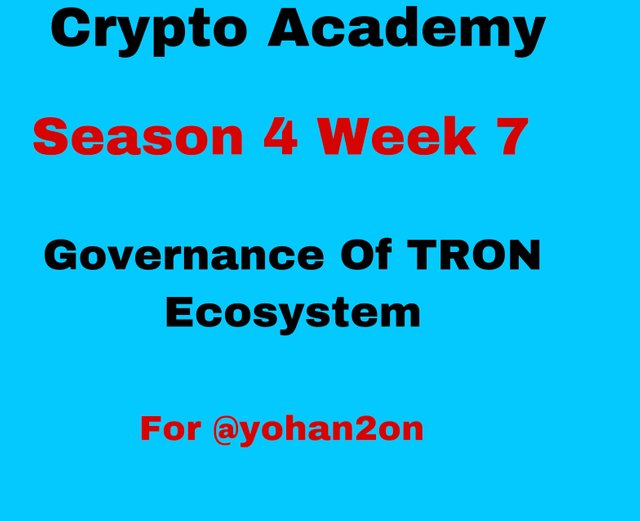
1- Who are Super Representatives, SR partners and SR candidates? (The Governance of the TRON Ecosystem)
Delegated Proof of Stake (DPoS) is the consensus mechanism used by the TRON network. Transactions in DPoS are validated through voting by witnesses that are approved in the DPoS. The users of the TRON network are responsible for the voting and their votes are used for the validation. Only users that stake tokens on the network are eligible to vote. These voters are of a particular number and they have a limit as well. Only this few number of voters qualify as validators. Other users in the network stand the chance of qualifying as validators based on the votes they gain in the the network. Voting is done every 6 hours so the users who acquire more votes are likely to become validators on their own. This keeps the network flowing in the right order.
The more users stake TRX, they acquire voting power on the network. This voting power is called the TRON power. The voting right is directly proportional to the the number of TRX staked. This means that for every one TRX staked, one voting power is acquired. The representatives on the network are those who contest for elections in order to be voted for as the validators of the network. These representatives are grouped into different categories. The representatives from 1-27 are referred to as super representatives. Those who rank between 28 and 127 are referred to as super representative partners . Super representative candidates are the ones ranked from 128 onwards.
All these representatives get block rewards in the form of TRX when there is a block production. 16 TRX is the special reward for the super representatives. 160 TRX is distributed between all the 127 representatives. Each representative gets his share of TRX after every production based on the votes a representative is a able to accumulate. The super representatives gain their 16 TRX and then also get their share of the 160 TRX in addition to that after every production of block. The total rewards in this case is obtained from adding the voting rewards to the block rewards.
Total rewards = (Block rewards x Brokerage ratio) + (Vote rewards x Brokerage ratio)
The brokerage ratio is distributed at 80:20 for voters and super representatives respectively.
All other rewards in the TRON network are calculated with the same formula. The Super representatives partners don’t get block rewards because they don’t mine blocks.

2 - What’s the difference between DPOS and POS consensus mechanisms?
PoS and DPoS are consensus mechanisms that were introduced to tackle the shortcomings of the already existing consensus mechanisms. The Proof-of-Work is a consensus mechanism that was previously used for validation but due its high energy consumption level, the Proof-of-Stake was introduced to tackle the energy consumption problem and at the same time very effective and efficient in the validation of transactions.
The Proof-of-Stake mechanism in addition to its effectiveness and efficiency, it is also developed in a way that it provides a lot of rewards to its users as well and at the same time it provides sufficient security for the system itself during the validation process. The DPoS is an advanced form of the PoS and it has been designed as an improvement on the PoS.
Proof-of-Stake
The Proof of Stake is a consensus mechanism which uses the number of stakes available in its network as a criteria to verify and validate transactions in the network. The more the number of stakes ongoing in the network, the more the transactions are verified and validated.
During the validation of transactions or blocks in the proof-of-Stake consensus mechanism, the rate of consuming energy is relatively low. The system doesn’t require a lot of energy to be able to validate transactions.
All blocks that are to be validated can be selected at any point in time. There is no specific order for selecting blocks for validation. The validators that are selected to validate each block are also picked in no order. This means the mechanism operates randomly.
The number of tokens staked is the criteria used in selecting system validators. Those with the most staked tokens are chosen as the validators. Those who are able to keep tokens and do not spend them are also considered during the selection of validators.
The security of the PoS is very tight because the tokens staked could be affected when the system allows for malware attacks to enter the system.
The major disadvantage of the PoS consensus mechanism is that it works in favour of those who have more tokens in the network. We can conclude here that it favours “the rich”. So those who are able to stake more tokens or have the capacity to keep more tokens without spending are chosen as the validators. Those who can’t stake or keep more tokens are left behind.
Delegated Proof of Stake
The DPoS was developed as an upgrade of the Proof of Stake consensus mechanism. The PoS has its own shortcomings despite the fact that it has solved so many previous challenges. The more new mechanisms are developed, the more problems that are discovered and then the developers try to solve them in the next consensus mechanism they develop.
This DPoS consensus mechanism operates in the form that the validators are voted for and after they have been elected, they then delegate final validators that will validate the next block in the network.
The election is done in different ways. For example the delegate linked to a pool can be staked which means that delegate has been voted for. The validator of different blocks varies from one block to another in this consensus mechanism. The validator of a block at one point is most likely not to be the validator of the next block due to the criteria used.
The transaction fees in this consensus mechanism are used to reward the witnesses in the ecosystem. The voters determine the distribution of the rewards and they also get their share of the rewards after the delegation they do during a block validation.
This mechanism is different from the PoS in a way that, it doesn’t give advantage to the wealthy. The validators are voted for in the form of delegation and they gain their rights to validate through. This provides equal opportunities for all users of the network. This DPoS mechanism enhances fairness in the ecosystem as the validators are voted for through delegation so nobody is left behind.
The number of witnesses on the DPoS is not that much. This enhances the scalability of the validation blocks in the network.

3 -Write a Step by Step tutorial showcasing how to stake/freeze TRX and vote for SRs
Steps involved in the freeze and votes for SRs
By using my TRONLINK wallet, I will be demonstrating how to freeze and Vote for the SRs I prefer.
I already have TRONLINK wallet installed on my phone so I proceed with the procedure.
After opening the TRONLINK wallet, click on Freeze icon.
A resource page will open so you enter the number of TRX you intend to be frozen and then click on the Freeze button. In my case I chose to enter 10 TRX.
Then Confirmation of the transaction is followed
Then the password part pops up then you enter your password and confirm.
The frozen TRX assets are displayed on the screen as seen in the screenshots below.
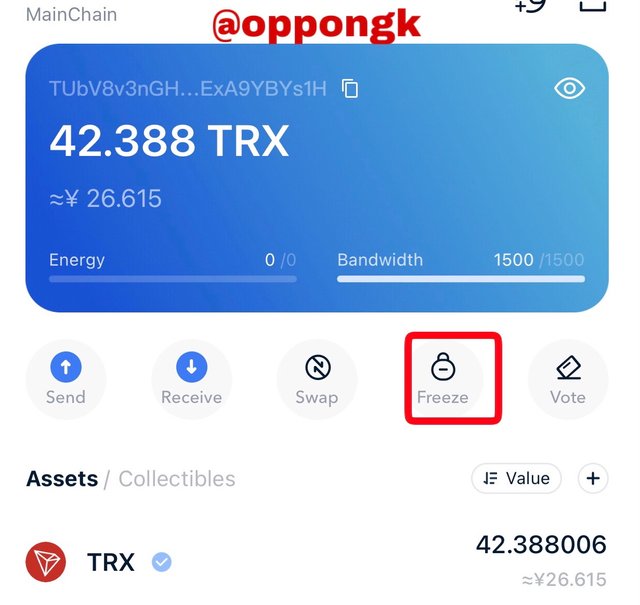
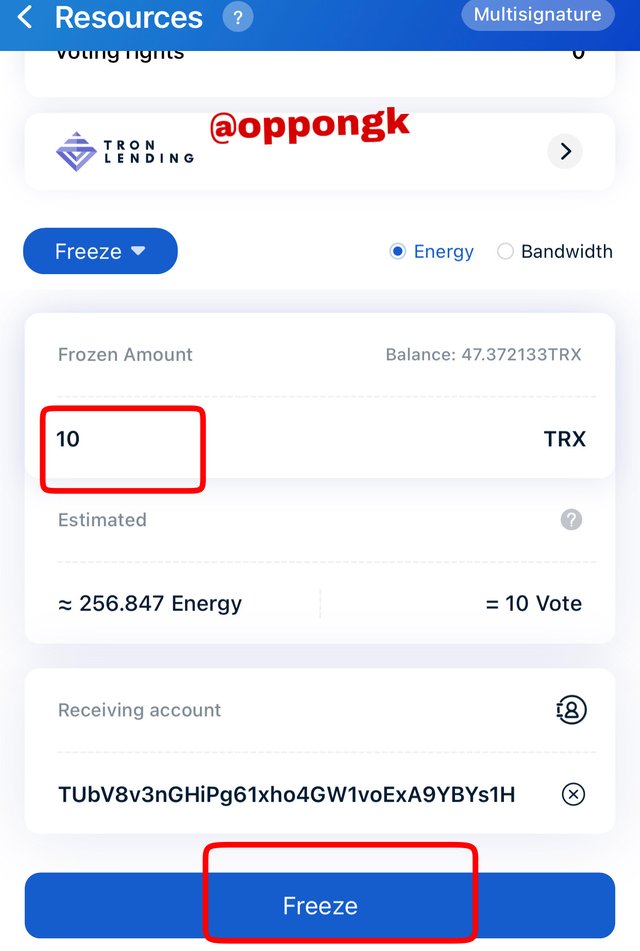
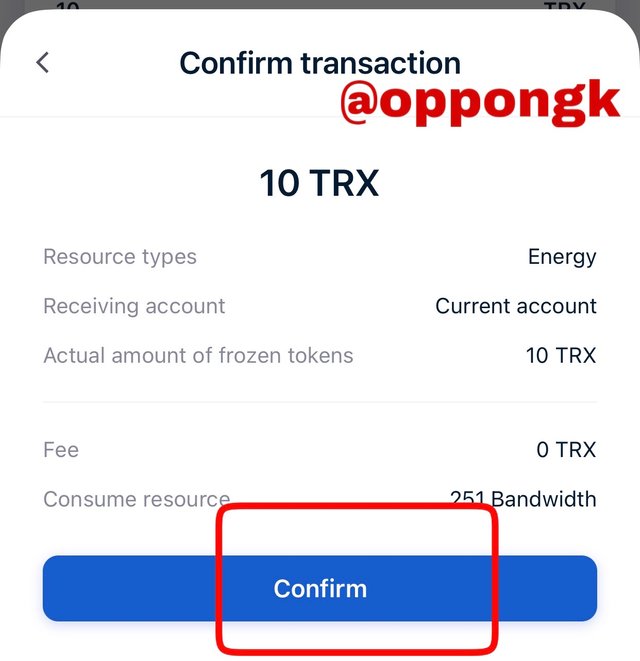
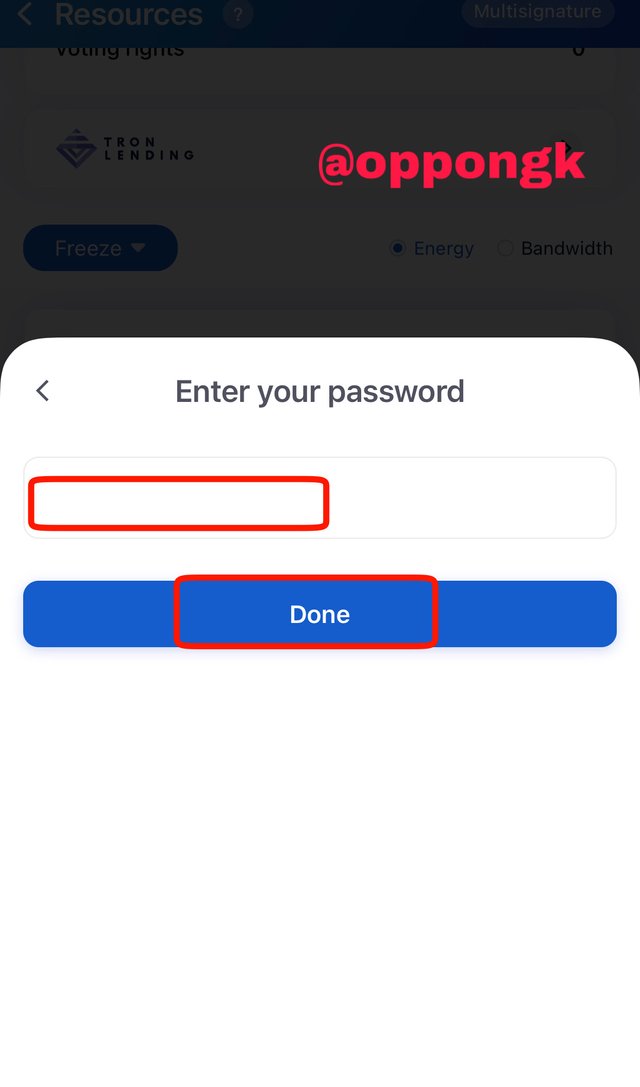
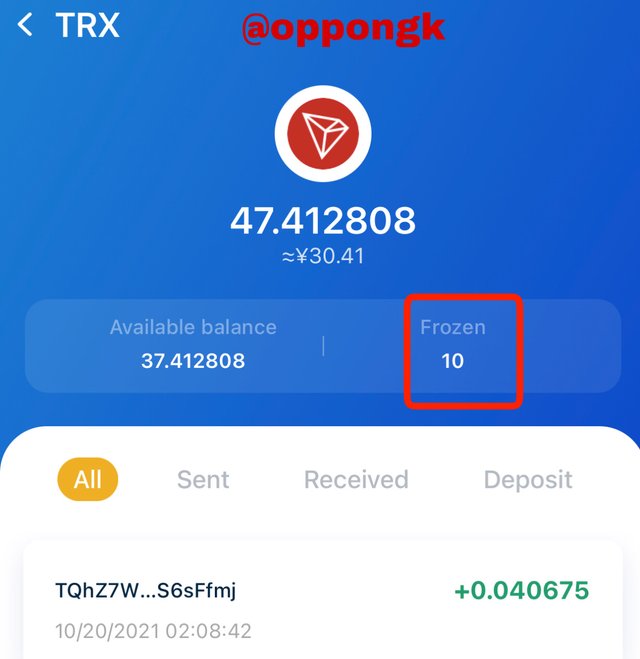
Steps involved in voting for SRs
After opening the TRONLINK wallet, click on the Vote icon.
The list of SRs will appear and you choose your choice. In this case I will vote for JD investment which is second on the list. It has an estimated yield of 6.38%.
After that you click on the vote button
Then the vote you want to vote for the SR is entered. In my case I will enter 10 and confirm it.
The last step requires a password so you enter it and you’re done voting.
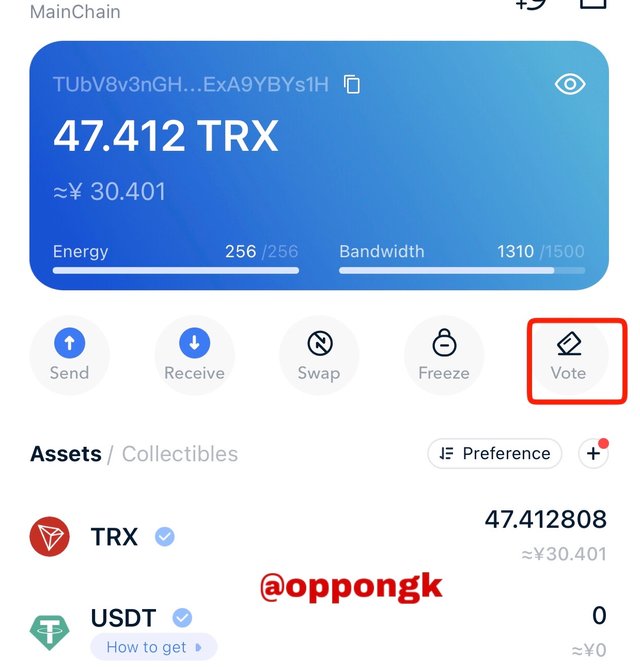
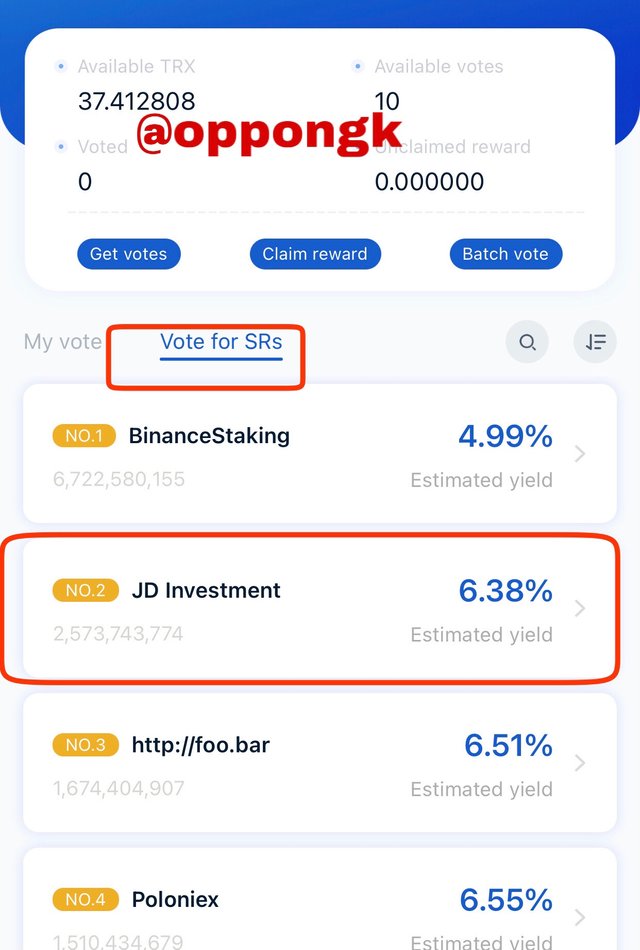
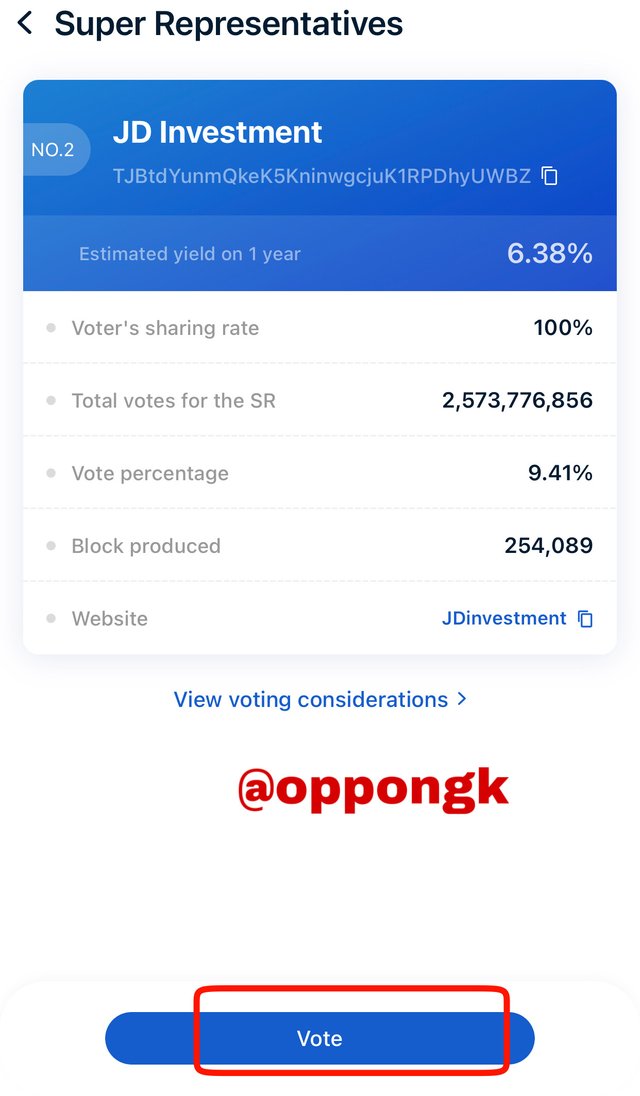
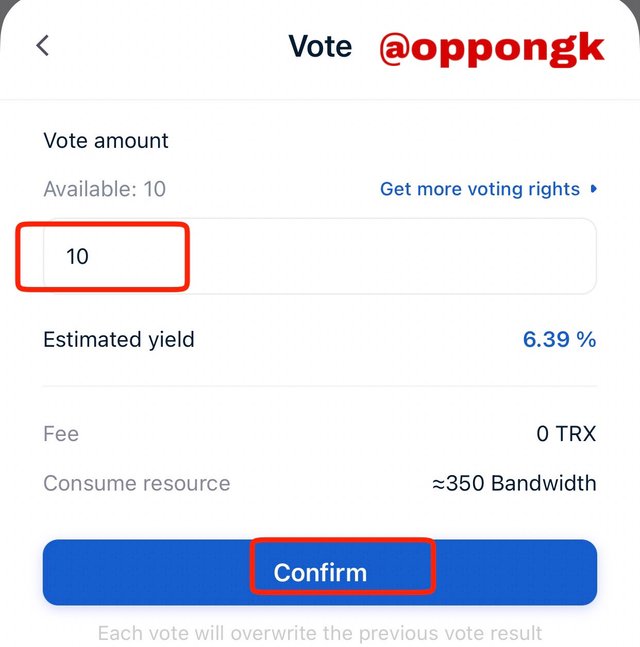
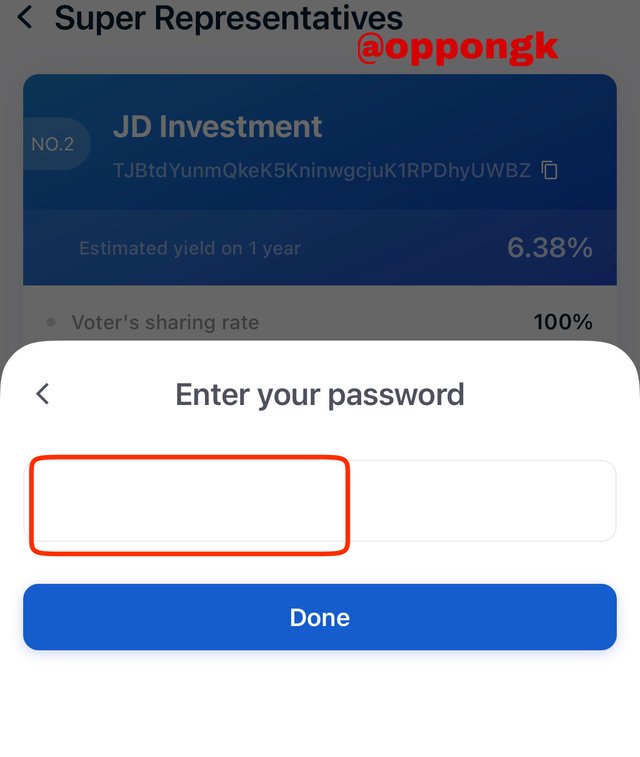
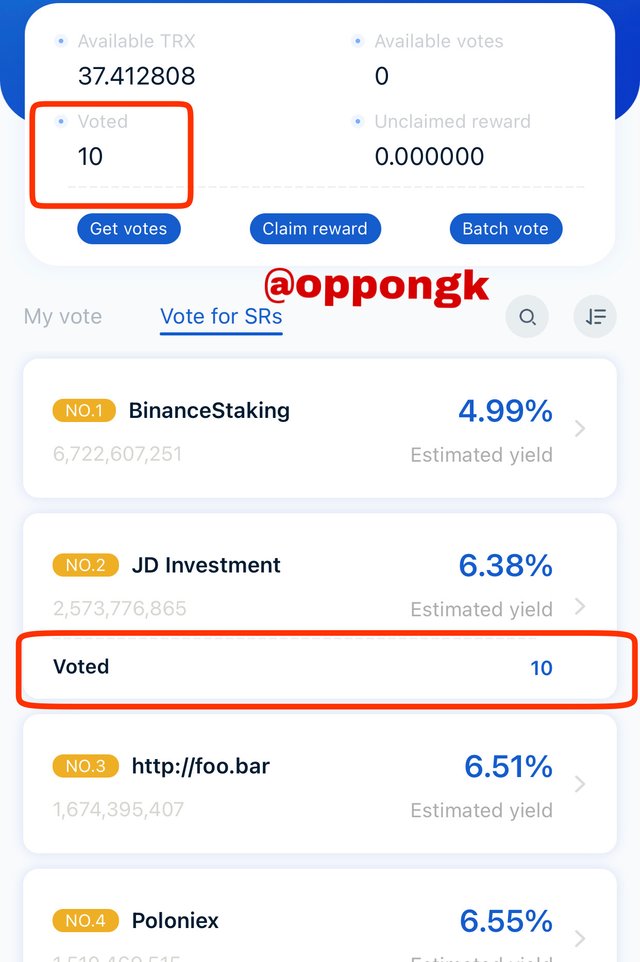

Conclusion
Blockchain consensus mechanisms such as PoS and DPoS have come to solve the shortcomings of the old mechanisms such as the PoW. Despite the massive improvement they have introduced to the blockchain system, they also have their limitations as no system is perfect. So more solutions are found to the arising problems.
Thank you once again professor @yohan2on for this educative and informative lecture.
Hi @oppongk
Thanks for participating in the Steemit Crypto Academy
Feedback
Total| 9/10
This is good work. Thanks for taking the time to learn about the governance of the Tron ecosystem.
My pleasure 😃. Thanks so much Professor @yohan2on for verifying my work.